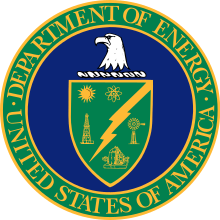Western Area Power Administration
The Western Area Power Administration (WAPA) markets and delivers hydroelectric power and related services within a 15-state region of the central and western United States. It is one of four power marketing administrations within the U.S. Department of Energy having the role to market and transmit electricity from multi-use water projects to retail power distribution companies and public authorities. Its transmission system carries electricity from 55 hydropower plants operated by the Bureau of Reclamation, United States Army Corps of Engineers and the International Boundary and Water Commission. Together, these plants have a capacity of 10,600 megawatts. WAPA is headquartered in the Denver, Colorado suburb of Lakewood, Colorado.
WAPA built several parts of the important Path 15 corridor that connects power grids in the Southwest and Pacific Northwest (the rest was privately built by PG&E). Recently, WAPA helped remedy a transmission bottleneck near Los Banos, California. That bottleneck was one of the reasons for the California electricity crisis in 2000-01. Another important transmission corridor WAPA built was Path 66, paralleling Path 15.
WAPA also owns and operates many electric power substations like the Mead substation to distribute power within the region.
WAPA and its energy-producing partners are separately managed and financed. In addition, each water project maintains a separate financial system and records.
Settlement for blackout
WAPA settled with FERC and NERC for the 2011 blackout.[1][2]
